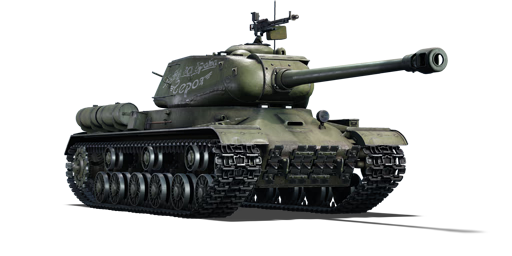


The IS-2 model 1944 "Revenge for the Hero Brother" is a special model of the late-generation second variant of the IS heavy tank family. The inscription "Revenge for the Hero Brother" pays tribute to Nikolay Krasikov, who was awarded the honorary title "Hero of the Soviet Union." Mikhail, his older brother, carved it on the turret of his tank after his death. When the war broke out, Nikolay Krasikov was only 17 years old, and it was at that age that he decided to follow in his brother's footsteps and become a tanker. After graduating from the Armour School in 1943, Nikolay fought in the battles of Voronezh and the First Ukrainian Front. He distinguished himself with his acts of courage during the battle of Kiev. Nikolay and his crew were among the first tanks to arrive at Lutezhy village, where they destroyed one enemy tank, eliminated two enemy anti-tank guns, and killed up to 40 enemy infantry. Two days later, Nikolay's tank was also the first to enter Vyshgorod, where he destroyed three more enemy anti-tank guns and 25 enemy infantry. He also rescued an ally company's commander and led two tank companies out of danger. On November 11, 1943, Nikolay Krasikov was killed in battle at Vinnitsa. Following that, he was named a "Hero of the Soviet Union". After his brother's death, Mikhail carved "Revenge for the Hero Brother" on his tank, and later used it in Pomerania.
Introduced in Update 1.49 "Weapons of Victory" initially as a purchasable premium pack, the IS-2 "Revenge" provides improved protection compared to the early-generation IS-2. It is essentially an IS-2 model 1944 with historical significance. Additional metal meshes, which are available as an add-on armour modification on the standard IS-2 model 1944 to improve protection against some high-explosive anti-tank (HEAT) rounds, are sadly unavailable here. Nonetheless, it provides outstanding protection at its rank due to its uniformly sloped hull front armour plate. The 122 mm D-25T tank gun, capable of killing any enemy ground vehicle in a single shot, remained the main armament. Since reload speed remains poor, it is vital to make every shot count. Given its acceptable reverse speed, it is possible to play in "reverse" mode with the back of the hull facing the enemy, which can substantially improve survival during engagement.
It was discontinued after the 2017 Victory Day sales, later made briefly available for the 2018 Winter sale and then appeared for the 7th Anniversary Sale as a premium purchasable in-game for golden eagles (GEs). The IS-2 "Revenge" was again removed from in-game purchasing after the 9th Anniversary Sale.
| Ammunition | Type | Armor penetration (mm) at a distance: | |||||
|---|---|---|---|---|---|---|---|
| 10 m | 100 m | 500 m | 1000 m | 1500 m | 2000 m | ||
| APHE | 205 | 201 | 182 | 161 | 143 | 126 | |
| HE | 37 | 37 | 37 | 37 | 37 | 37 | |
| APHEBC | 205 | 203 | 192 | 178 | 166 | 155 | |
| APCBC | 230 | 227 | 215 | 200 | 186 | 173 | |
| Belt | Belt filling | Armor penetration (mm) at a distance: | |||||
|---|---|---|---|---|---|---|---|
| 10 m | 100 m | 500 m | 1000 m | 1500 m | 2000 m | ||
| API-T/IAI/API-T/AP-I(c) | 34 | 32 | 24 | 17 | 12 | 8 | |
| Belt | Belt filling | Armor penetration (mm) at a distance: | |||||
|---|---|---|---|---|---|---|---|
| 10 m | 100 m | 500 m | 1000 m | 1500 m | 2000 m | ||
| AP-I/API-T | 13 | 12 | 7 | 3 | 2 | 0 | |







 2 x (140 / 200 / 220) %
2 x (140 / 200 / 220) % 
 2 x 184 %
2 x 184 % 

Mobility | |
|---|---|
Protection |
|---|
Firepower | |
|---|---|